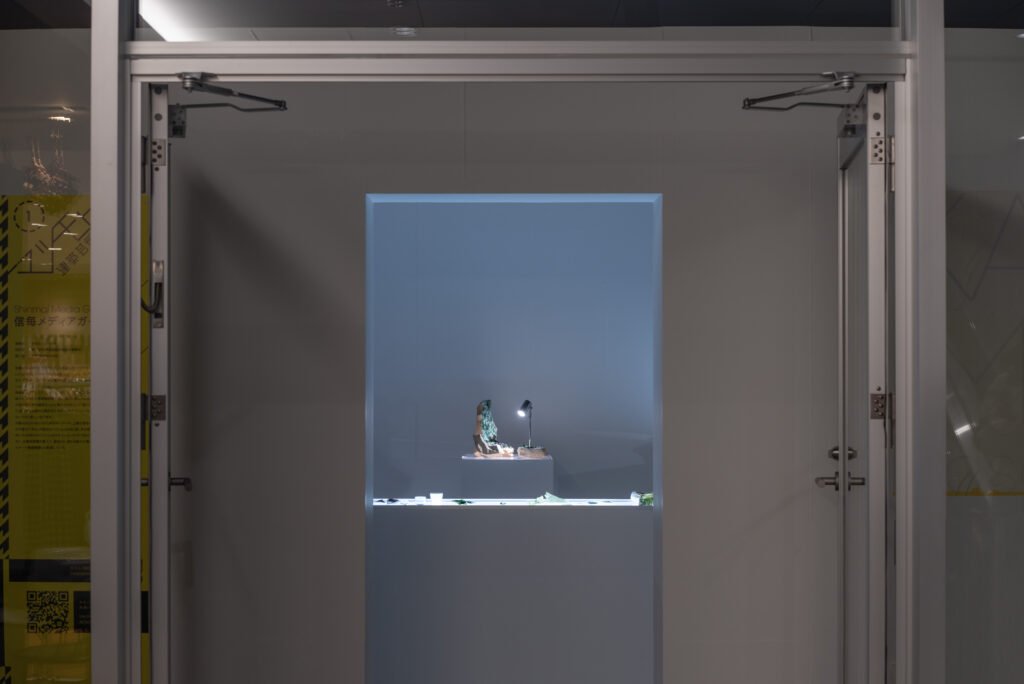
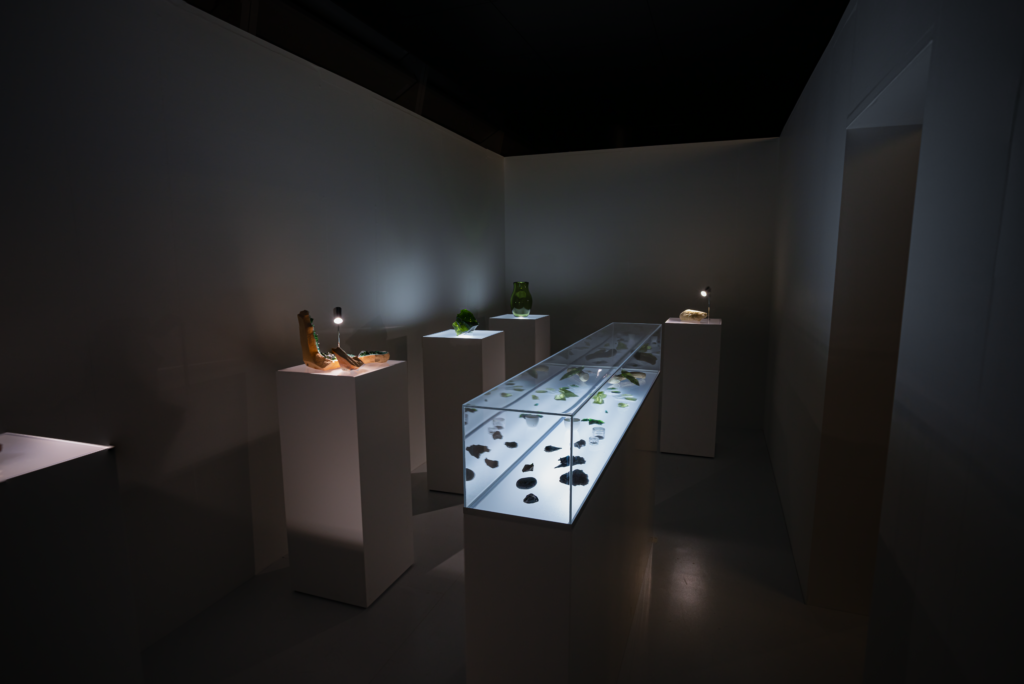
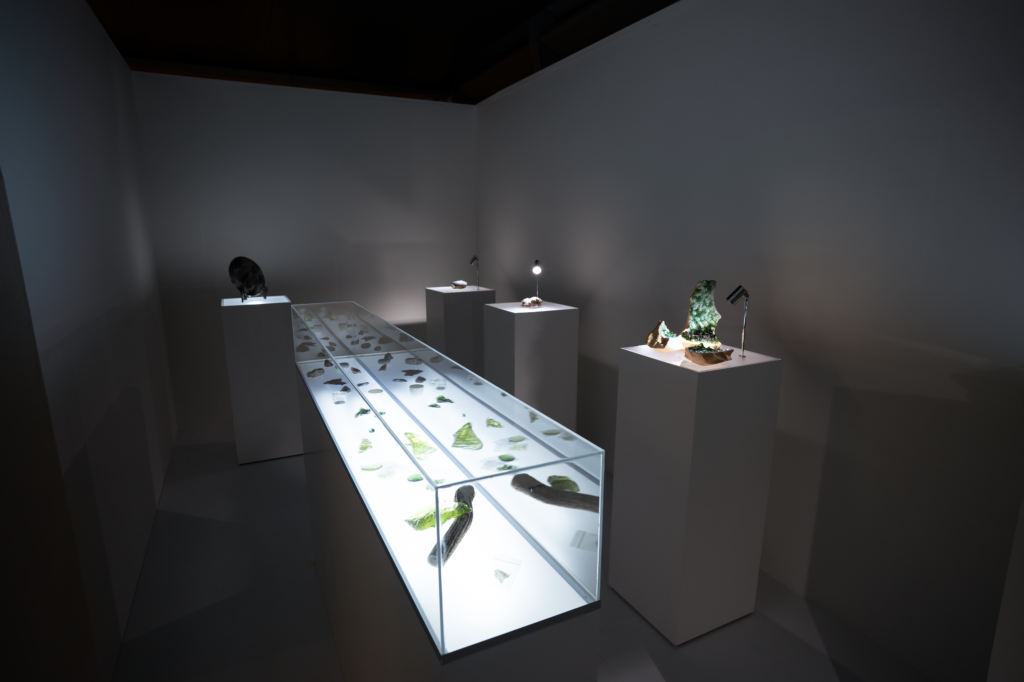
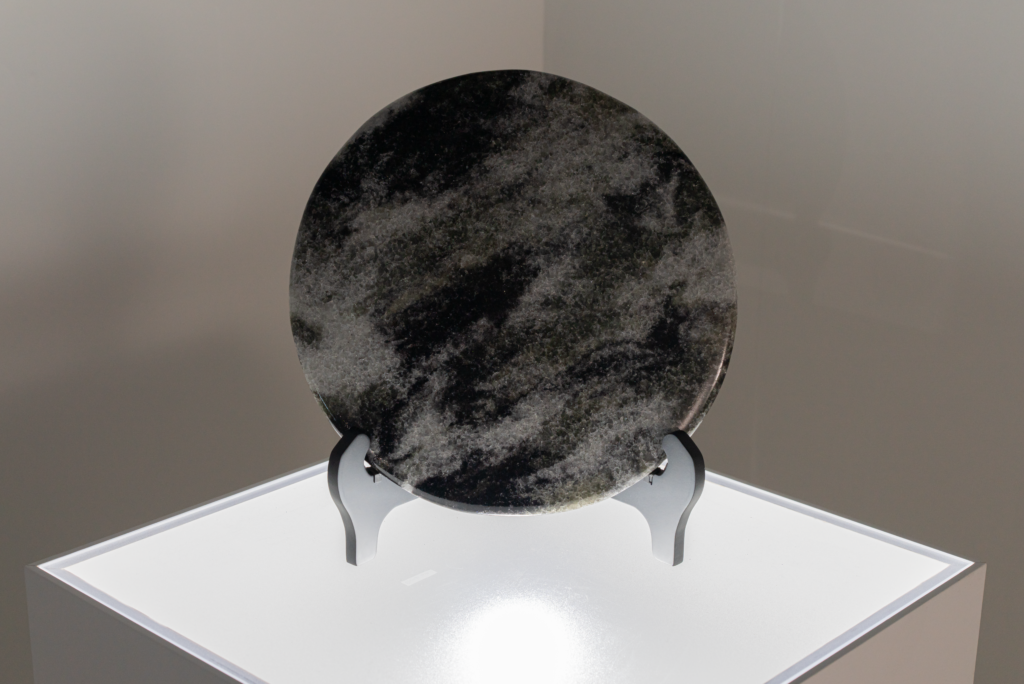
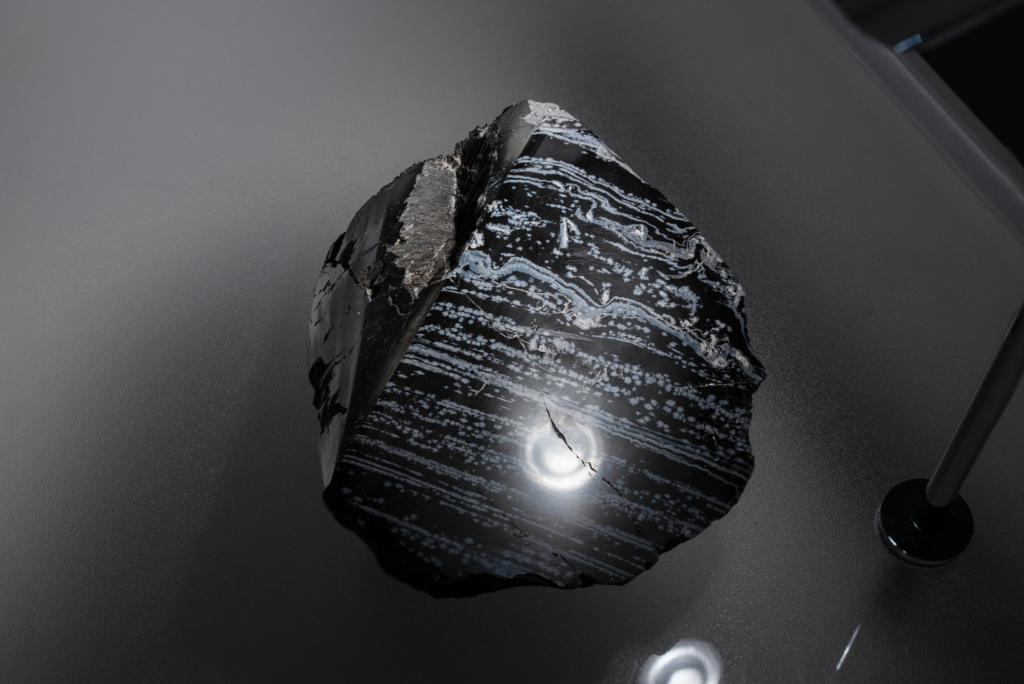
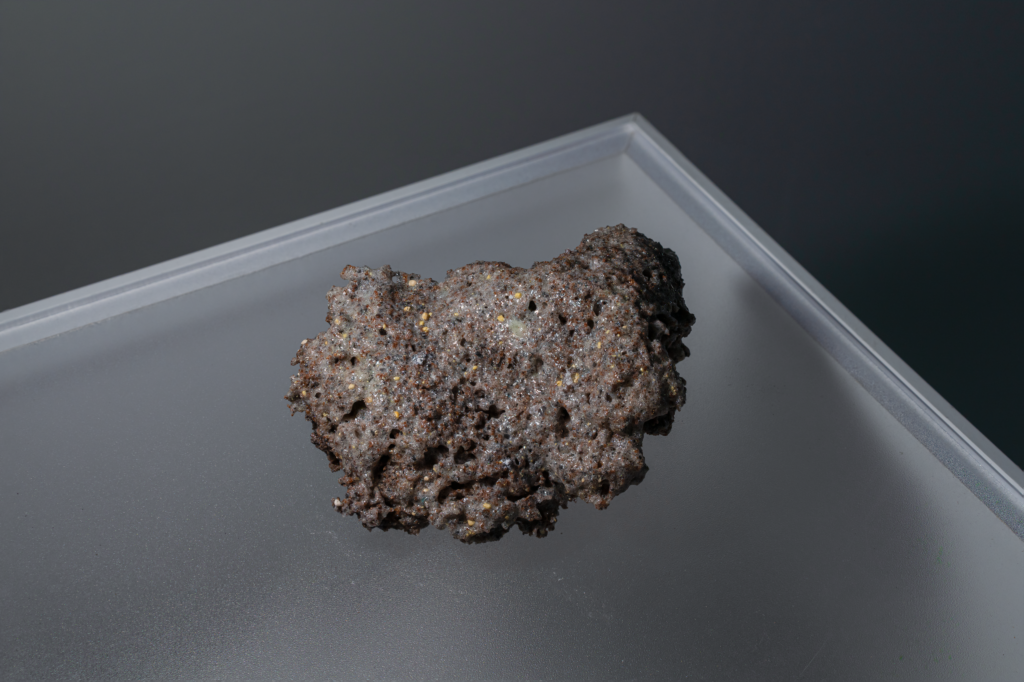
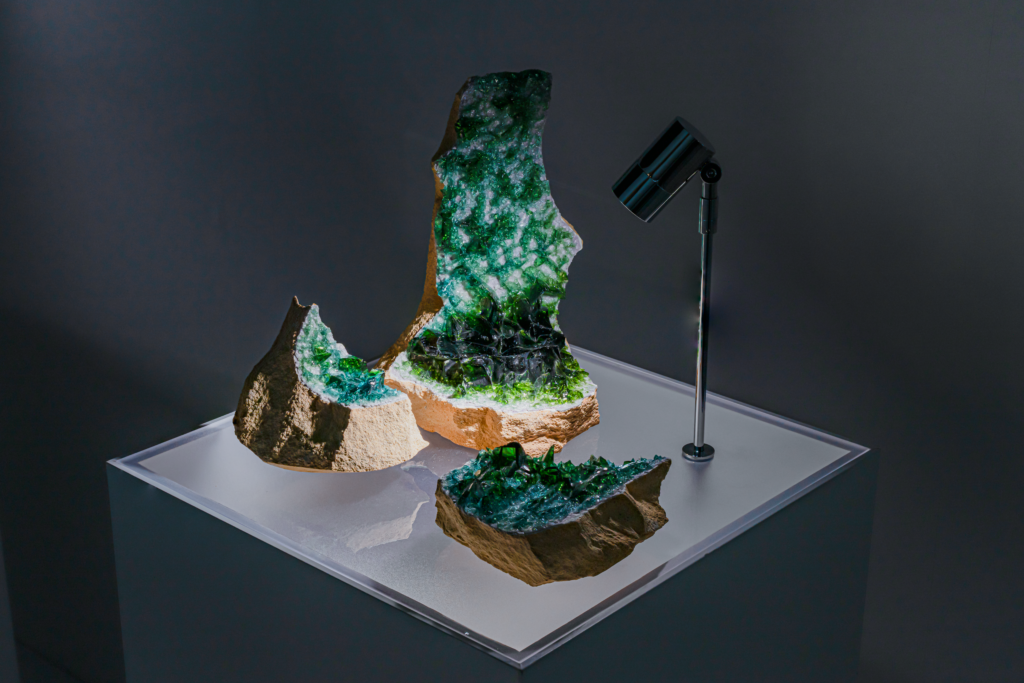
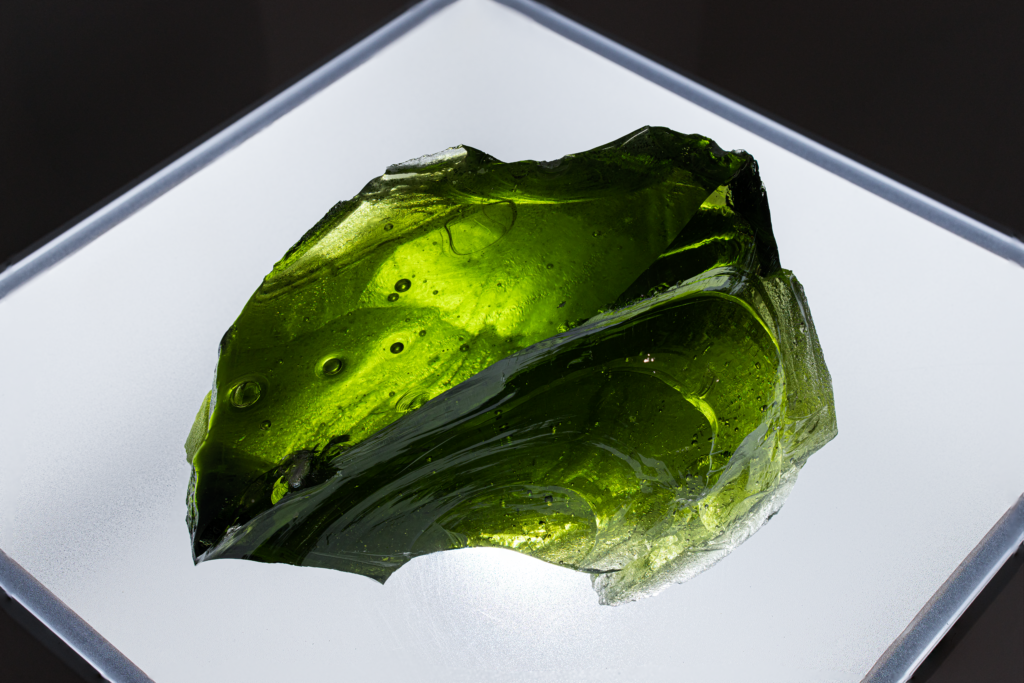


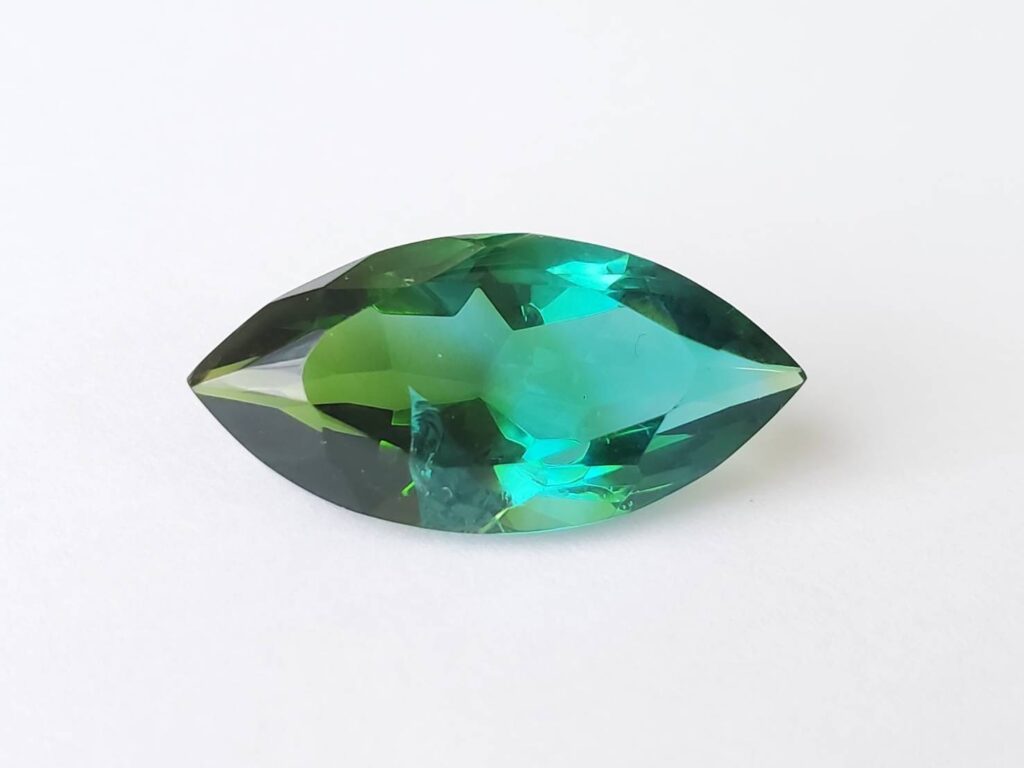
マツモト建築芸術祭
会期:2023年2月4日(土)〜26日(日)
会場:信毎メディアガーデン
https://maaf.jp/
トルコのチャタル・ヒュユクの遺跡から黒曜石の鏡が出土した。それは紀元前 6200 年頃に制作されたといわれ、最古の人工の鏡である。黒曜石は火山の噴火によってできた天然のガラスであり、それから約 8000 年後の今もガラスは鏡として使用されている。
本作は、様々な土地の黒曜石を砕き、溶かし、混ぜ合わせ、人工的な塊を生成する。本来の黒を失い、透明度を持つこの塊に対して、作家はガラスのように、宝石のように、また本来の黒曜石のように扱い、土地の記憶に触れながら成型していく。
これは、透過と反射だけではなく、太古の素材を使用しつつも、新たに生まれた素材であるという対も併せ持つハーフミラーである。
制作協力|岩宿博物館、海馬・地質ガラス研究所、株式会社Makership、nico design、UNOU JUKU by AGC株式会社
写真|宮川悠之介
An obsidian mirror was excavated from the site of Çatal Hüyük in Turkey. It is said to have been produced around 6200 B.C., making it the oldest man-made mirror. Obsidian is a natural glass formed by volcanic eruptions and is still used as a mirror about 8,000 years later.
In this work, obsidian from various locations is crushed, melted, and mixed to create artificial lumps. The artist treats these lumps, which have lost their original blackness and become transparent, like glass, like gemstones, or like original obsidian, and molds them while touching the memories of the land.
This is a half-mirror that not only transmits and reflects, but also combines the use of an ancient material with the pair of being a newly created material.
Material and technical cooperation:wajuku Museum,KAIBA Geological Glass Institute,
Makership Inc.,nico design,UNOU JUKU by AGC Inc.
Photo|Yunosuke Miyagawa


